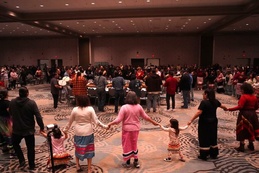Opportunities in Manufactured and Modular Housing
Guest Opinion
By Yarrow Brown | Nov. 23, 2024
A home is a home—no matter its shape, size, or how it was built. And we need a lot of homes for both seasonal and year-round people in northern Michigan.
We have a 0.7% vacancy rate in our region, which means there is very little housing stock available for those who live and work here. We have a huge need for housing that is affordable and a huge opportunity to solve this need. We don’t want anyone to pay more than 30 percent of their income on housing, but in our region, many spend up to 50 percent on housing and transportation, meaning our essential workforce is often priced out of our communities for both rental and for-sale housing.
While we still need traditionally built homes, we also need to make room for technologies and new models, like manufactured and modular housing. Why do we create obstacles for innovative housing solutions that don’t fit traditional models?
With the shortage of skilled construction labor, exploring ways to increase efficiencies in housing construction has become more critical than ever. Rising construction costs have made it challenging for developers to add new affordable units to the housing market, especially in high-cost areas like ours.
The high cost of building new housing is driven by several factors including the cost of land, materials, and labor. Another barrier is land use regulations, which dramatically limit both the location and scale of new housing. Not to mention the timing and uncertainty around securing and layering various public subsidies to produce affordable housing units. To effectively tackle the housing crisis, we must pursue policy reforms that address all three key drivers of rising housing costs.
Many people think of a manufactured or modular home and immediately go to a 1970's mobile home park. While these still exist and we need to preserve them, manufactured and modular housing has come a long way in 50 years.
What is the difference between manufactured and modular? Modular building is where the product is created off-site at a factory and its components, or modules, are then transported to the construction site, where they are assembled on a permanent foundation. Since modular homes are assembled on-site and attached to a permanent foundation, they are classified as real property like traditional site-built homes.
Manufactured homes are also constructed in factories, but they are assembled on a permanent trailer chassis and are subject to the U.S. Department of Housing and Urban Development’s (HUD) design and fabrication standards and different financing requirements.
The benefits to this type of construction includes overall cost savings, shorter development timelines, and an overall safer and more efficient development process. There are some great examples in our area of both modular and manufactured.
One is in Emmet County where Northwest Michigan Habitat for Humanity is working with General Housing Corporation to build over 30 single family homes using modular construction. Also in Emmet County is Pine Pond, which has manufactured homes for sale. In Charlevoix County there is Fox Run, part of Sun Communities in Boyne City.
Investing in this type of housing can help open more opportunities. Some folks can downsize to a manufactured home community or some can purchase their first home at an affordable rate.
Despite the benefits of these building types, they still represent a relatively small segment of the construction market. And there are limitations including scarcity of manufacturers, zoning regulations, and state transportation requirements.
There are ways that our region could boost the utilization of modular construction, including expanding zoning to ensure this type of construction is allowed. We can also ensure there are financial resources for the modular construction of affordable housing. Local units of government could explore and adopt funding mechanisms that promote innovations in the construction of affordable, resilient, and energy-efficient housing.
One of the barriers to housing is not having standardized building codes and land use to facilitate production and project approvals of modular and manufactured housing. One solution is to work together to develop uniform building code rules governing modular construction. Standardizing the code requirements would enable manufacturers to streamline their production and this would improve efficiency, reduce costs, and ultimately facilitate a broader adoption of modular building.
At the local level, governments should streamline planning approvals and reform zoning to facilitate the adoption of modular and manufactured construction for affordable construction, particularly multifamily housing.
We can also work to preserve the existing manufactured home communities that are threatened by outside investors. Local governments could provide business incentives for establishing modular factories—for example, by purchasing units built off-site; facilitating the use of public land, idle lots, and brownfields for creating modular business opportunities; and promoting public-private partnerships.
Let’s stop closing doors for innovation and technology and instead realize that these opportunities will allow people to remain in our community, become homeowners, and create a life in northern Michigan.
Yarrow Brown is the executive director of Housing North, a 10-county housing agency serving northwest Michigan.
Trending

Our Top Stories of 2025
Each year, we look back at the stories we’ve shared over the last 12 months and pull together the ones that got the mo… Read More >>
Winter Break at the Library
Trying to keep the kids busy while school is out? Head to the library! Dec. 22, take your 12+ tweens and teens to the Mesick… Read More >>
Umbo Is Coming...to The Little Fleet
Winter isn’t just coming—it’s already here. But if you want a break from the December blues, head to The L… Read More >>


